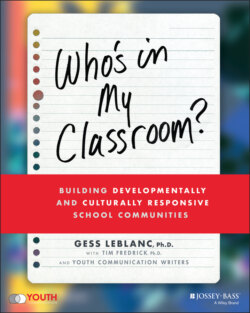Читать книгу Who's In My Classroom? - Tim Fredrick - Страница 25
2. Establish norms and expectations regarding the use of developmentally and culturally responsive teaching practices.
ОглавлениеTo foster a school community that aims to support students’ developmental needs in culturally responsive ways, schools do better when they establish instructional norms and expectations that serve as the foundation for instructional planning and delivery. One way that I have been able to assist these efforts is through working with school administrators and teachers to create guiding questions documents that align with developmentally and culturally responsive teaching. The questions can help schools codify their expectations regarding instructional planning and make them transparent. For example, answering these questions can help teachers design more DCRT-responsive lessons:
What real-world connections do you intend to develop during your lesson?
How does your knowledge of your students inform your instructional planning?
What opportunities for movement will you include in your lesson?
What opportunities for interpersonal interactions will you provide to your students?
What strategies will you use to ensure that all students are engaged in the lesson?
How will you differentiate and diversify your assessments so that they are responsive to the needs of diverse learners?
